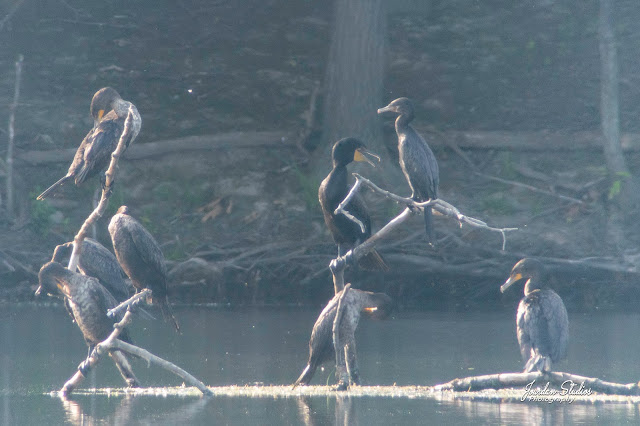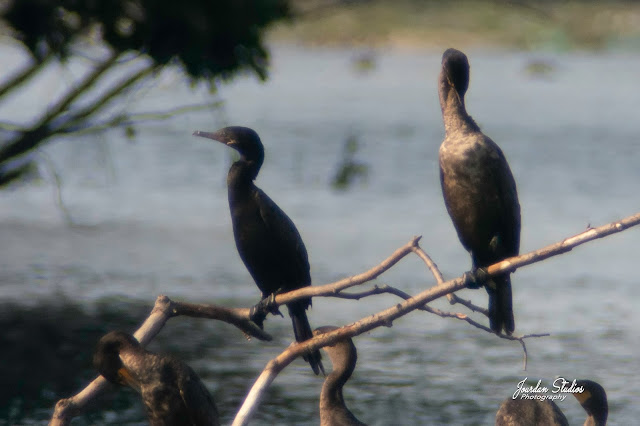Neotropic Cormorant - 03 Jul 2021
Earlier this week Bobby Irwin found Wayne Co., MI's first record Neotropic Cormorant (Phalacrocorax brasilianus) on the Detroit River just out from the Detroit River International Wildlife Refuge. The bird was roosting on a snag in front of Mud Island with a dozen or so Double-crested Cormorants.
It was reported again this morning so I took a drive to the refuge and was able to refind it on the same snag among the larger Double-crested Cormorants. Viewing the bird from the platform along the east shore of the river I was looking directly into birds that were backlit by the rising Sun. But, the Neotropic Cormorant was slightly darker and visibly smaller than the browner Double-crested Cormorants as it perched high up on the snag.
Big props to Bobby for spotting this bird. It appears to be a juvenile with barely a white outline to the gape of its left jaw while the right side of the face only sports a white spot at the extreme edge of the gape. Otherwise you are forced to identify it by its smaller size, and in good light, its overally blacker appearance.
Neotropic Cormorant sightings are not unusual for the Great Lakes Region, but it is a bird that is out of its normal range when found. Just to the north of us in Macomb County a pair of birds are apparently nesting at Lake St. Clair Metropark!
 |
| map courtesy of All About Birds (Cornell) |
Cin-Ty Lee has a nice discussion comparing these birds.
I took a video of the bird as it preened next to a larger Double-crested Cormorant as I stood next to the viewing platform next to the river's edge inside the Refuge's woodland nature trail. With my Swarovski STX85 spotting scope at its maximum magnification of 60X I was digiscoping the bird with an effective focal length of 3600 mm! This required a sturdy tripod and the Sony remote that allowed for wireless control of the Sony a9 and 40mm f/2.5 lens at f/2.5. Focus-peaking was critical to getting decent focus as heat shimmer rendered the flock in and out of focus continually despite the fixed focus length.
I then moved over to the kayak launch after Justing Labadie reported good lighting for the bird. Indeed, I did have better light and took more video and stills.
Larry Urbanski then showed up and we chatted a bit while the video recorded squabbling, preening, flying off to feed on the river, and a bit of a swim.
Better lighting will be had if the bird sticks around till evenings when the Sun is shining from the west.
According to Julie Craves this bird is #352 for Wayne Co. and another great addition to the new Refuge's list of rare finds!














Comments